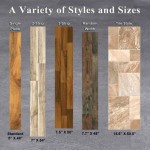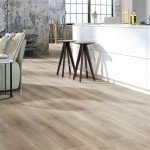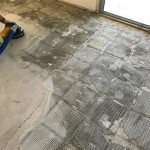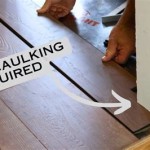Vinyl vs. Laminate Flooring: Pros and Cons
Choosing the right flooring for your home can be a daunting task, with numerous materials and styles to consider. Vinyl and laminate flooring are two popular options known for their durability and affordability. While both materials offer benefits, they also have distinct pros and cons that can influence your decision. This article will delve into the differences between these two popular flooring options, providing a comprehensive overview of their advantages and disadvantages to help you make an informed choice.
Durability and Water Resistance
Durability is a key factor for any flooring material. Vinyl flooring offers superior water resistance compared to laminate flooring. Vinyl tiles are generally waterproof and can withstand spills and moisture without warping or swelling. This makes them ideal for high-traffic areas, kitchens, bathrooms, and even basements. Laminate flooring, on the other hand, is susceptible to water damage and should be avoided in areas prone to spills or moisture.
While some laminate flooring options are advertised as "water-resistant," they are not truly waterproof. This means they can handle minor spills but may be damaged by prolonged exposure to water. Vinyl flooring surpasses laminate flooring in this aspect, offering greater durability and protection against moisture for a longer lifespan.
Installation and Maintenance
Installation is another important consideration. Vinyl flooring is generally easier to install compared to laminate. Vinyl tiles can be glued or clicked into place, making them DIY-friendly. Laminate flooring requires a floating installation method, which can be more intricate and may necessitate professional help. However, both vinyl and laminate flooring are relatively low-maintenance options. Both materials are easy to clean and do not require special cleaning products. Regular sweeping or vacuuming is sufficient to maintain their appearance.
Vinyl flooring is also more comfortable underfoot than laminate flooring, as it has a softer feel. It can also be a quieter option, reducing foot traffic noise. However, it is important to note that some vinyl flooring types can become slippery when wet, requiring caution in areas prone to spills.
Style and Aesthetics
When it comes to aesthetics, both vinyl and laminate flooring offer a wide range of styles and designs. Vinyl flooring can mimic the look of natural materials like wood, stone, and tile, providing a realistic and sophisticated appearance. It is also available in a variety of colors, patterns, and textures to suit different design preferences.
Laminate flooring also comes in numerous styles and designs, including wood-look planks, tile patterns, and even stone imitations. However, laminate flooring can sometimes appear less realistic compared to vinyl flooring, especially when it comes to replicating natural materials. It is important to examine the quality and detail of the laminate flooring to ensure it aligns with your aesthetic preferences.
Both vinyl and laminate flooring can be used to create a variety of interior design styles, from traditional to contemporary. The key is to choose a style that complements the overall design of your home and your personal preferences. Ultimately, the choice between vinyl and laminate flooring will depend on your individual needs and priorities.
Cost and Value
Vinyl and laminate flooring are both considered affordable flooring solutions, making them popular choices for budget-conscious homeowners. Generally, vinyl flooring is slightly more expensive than laminate flooring per square foot but offers superior durability and water resistance. However, the overall cost of installation can vary depending on the complexity of the project and the chosen flooring type.
It is important to consider the long-term value of both flooring options. Vinyl flooring's greater durability and water resistance can translate into a longer lifespan, potentially reducing the need for replacement in the future. While laminate flooring is initially less expensive, it may require replacement sooner due to its susceptibility to water damage. Ultimately, the cost-effectiveness of each flooring type will depend on your specific needs, budget, and desired lifespan.
Conclusion
Choosing between vinyl and laminate flooring requires careful consideration of your individual needs, budget, and lifestyle. Vinyl flooring offers superior durability, water resistance, and comfort underfoot, making it a suitable option for high-traffic areas and rooms prone to moisture. Laminate flooring provides a budget-friendly alternative with a wide range of styles, but its susceptibility to water damage is a major drawback. By weighing the pros and cons of each flooring type, you can make an informed decision that aligns with your specific requirements and preferences.

This Or That Laminate Vs Vinyl Ben Laube Homes

Comparison Laminate Vs Vinyl Flooring Which Is Better

Laminate Vs Vinyl Flooring Pros And Cons How To Choose Lx Hausys

Luxury Vinyl Vs Laminate Flooring Pros And Cons The We Chose Angela Marie Made

Laminate Flooring Vs Vinyl Pros And Cons East Coast Interiors

Vinyl Vs Laminate Flooring What S The Difference

Laminate Vs Vinyl The Home

Luxury Vinyl Vs Laminate Flooring Pros And Cons The We Chose Angela Marie Made

This Or That Laminate Vs Vinyl Ben Laube Homes

Vinyl Vs Laminate Flooring Refloor
See Also







